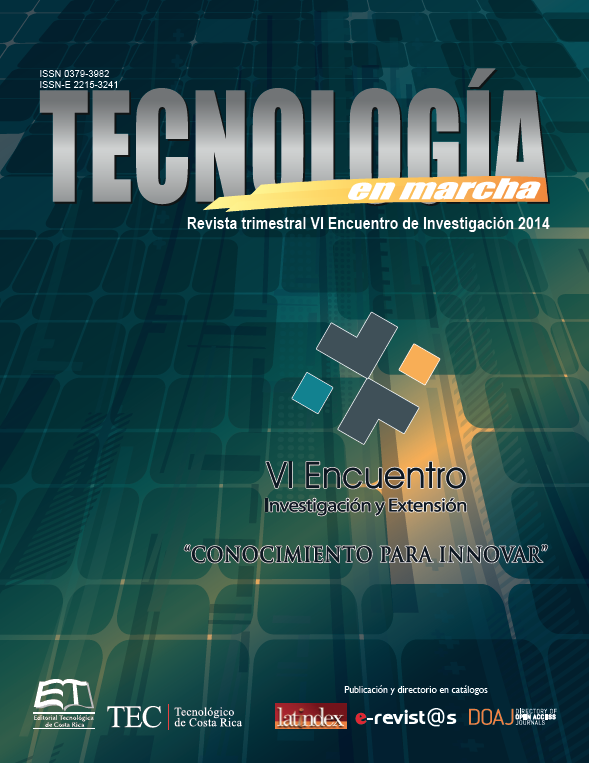In vitro culture of Tamarillo (Cyphomandra betacea (Cav.) Sendt. (Orange Phenotype) from Costa Rica
Main Article Content
Abstract
Tamarillo or tree tomato (Cyphomandra betacea), is a fruit plant of commercial importance in countries such as Bolivia, Colombia, Ecuador, and Peru, where it is consumed as a fresh or processed fruit. Traditionally, it is grown through seeds or plant cuttings, leading to problems regarding heterogeneity and quality of the planting material. In this research, an in vitro micropropagation protocol was developed for a domestic tree tomato, from Costa Rica, and of the orange phenotype; which has considerable potential for its use in agroindustry and in agricultural diversification. Two different in vitro disinfection treatments were evaluated, with variations of 2,5% and 5,0% (a.i 75%) for Ca(ClO)2. Three in vitro multiplication treatments of the plant material with different growth regulators and MS salts (1962) concentrations, as well as six in vitro roo-ting treatments with various growth regulators and gelling agents were also tested. Through the study, it was established that the disinfection with 2,5% of Ca(ClO)2 was the best for in vitro establishment. Additionally, the research evidenced that the optimal micropropagation growth medium consisted of M1, comprised of 100% MS salts (1962), 3% sucrose, 1,8g/L of Phytagel®, 0,5mg/L de AG3, 0,25mg/L of BAP and 2,0 mg/L of PaCa; which presented the most adequate balance between the average number of budding/cutting and the average number of internode/cutting, without the excessive formation of callus. Meanwhile, the M5 growth medium, consisting of 100% MS salts (1962), 6,0g/L of agar, 3% sucrose and without any growth regulators, as well as the E6 growth medium, including 100% MS salts (1962), 8,0g/L of agar, 3% sucrose, and without growth regulators, both required a shorter period for root formation, a higher average number of roots, and in average longer stems and roots.
Article Details
Los autores conservan los derechos de autor y ceden a la revista el derecho de la primera publicación y pueda editarlo, reproducirlo, distribuirlo, exhibirlo y comunicarlo en el país y en el extranjero mediante medios impresos y electrónicos. Asimismo, asumen el compromiso sobre cualquier litigio o reclamación relacionada con derechos de propiedad intelectual, exonerando de responsabilidad a la Editorial Tecnológica de Costa Rica. Además, se establece que los autores pueden realizar otros acuerdos contractuales independientes y adicionales para la distribución no exclusiva de la versión del artículo publicado en esta revista (p. ej., incluirlo en un repositorio institucional o publicarlo en un libro) siempre que indiquen claramente que el trabajo se publicó por primera vez en esta revista.

